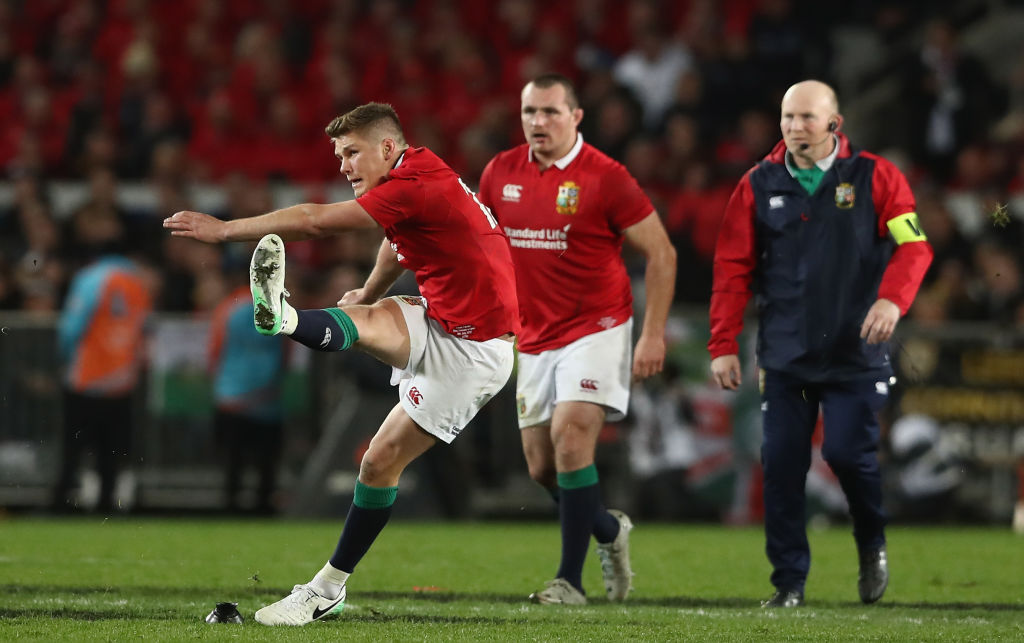

Gatland’s warning, just before the giant 23-year-old Welsh wing played his first game since March after suffering a series of four concussions, highlights a massive problem coming down the road in which World Rugby/IRB have been complicit. This was illustrated when, last season, an RFU audit revealed that rates of concussion in the Premiership were 59 per cent higher during the 2013-14 season than the previous year.
While the campaign for improved cognitive testing and medical screening for players who have suffered head injuries is essential, and long overdue, it is my belief the root cause of the extraordinary increase in concussion in the game is bad law-making by the international governing body.
Nowhere is this more evident than in the decisions made over the last 15 years which has seen the replacements bench grow to eight players, all of whom are required, above all, to make a big impact. The facility for coaches to change over half their starting line-ups has been radical, and the best remedy is to take the equally radical step of cutting the bench in half.
The choice is simple. The super-size element in pro rugby has got to be stopped if we want to preserve a game for all shapes and sizes. The rise of the replacements bench has changed the face of the game from one which was attritional, and put as much emphasis on stamina and skill as it did on size and strength, to tipping the scales totally in favour of beefing up your side by adding greater collision-power after half-time – with overpowering rather than having the stamina to outlast your opponents the new final quarter strategy.
Other law changes have also compounded the bench problem by encouraging the professional game to become super-sized. It started with the flagrant licence given to elite referees to erode the scrum contest by allowing crooked put-ins, which resulted in making smaller hookers who could strike for the ball redundant, and the introduction of what was effectively a third heavy duty prop at hooker.
Another contributory factor in putting size over stamina has been the outlawing of rucking with the feet, creating mini pile-ups and the new Rugby League-style phenomenon of flat-line defences strung across the field, in which head-on gang tackling is now the norm.

The likelihood of head injuries increasing when you put fresh, pumped-up heavyweights on the field for a limited period of time against other players who will be fatigued after playing for, say, an hour in a fast-paced match, is obvious.
The rapid increase in size and bulk of the players not only at the professional end of the sport, but also stretching into the community game, is fraught with pitfalls. The use of bodybuilding supplements, and drugs, is widespread enough for there to be a continuous drip of players not just in the UK, but worldwide, being served with lengthy bans.
The first step that World Rugby/IRB should take after the World Cup is to cut the bench to five, with three front row forwards, and two utilities, either a back and a forward, or two backs.
There used to be a logo that read, “beer was invented to stop props from taking over the world”, and I’ll admit to always having a soft spot for the heavy, squat, stocky brigade who inhabit the darker reaches of the scrum. However, the front row should be left the lion’s share of the replacements bench for practical reasons rather than sentimental, because their scrummaging expertise and physical type are intrinsic to giving Rugby Union its unique physical imprint and character.
Without the scrum Rugby Union would lose part of its soul, and as there are few things which blunt the competitive edge in the game faster than uncontested scrums, three front row replacements are essential, especially at the elite end of the game.
However, if the weight that has to be borne across the front row is reduced by players losing bulk and replacing it with stamina, and coaches encourage props who can play on both sides of the scrum, and hookers who can fill in as replacement flankers, it could in time be cut to two.
This will prevent pro rugby from becoming the land of the giants. It will restore the balance to a game of skill and attrition in which muscle and poundage are no longer the primary requirements, unless you can carry it for the full 80.
Above all, it will encourage all physical types to play Rugby Union, and will reduce the collision injuries – especially the alarming rise in concussion – which are damaging our sport.

British and Irish Lions
British and Irish Lions: Elliot Daly Silenced the Doubters; Now It’s Time for Owen Farrell




























You must be logged in to post a comment Login